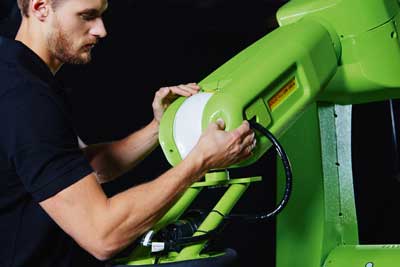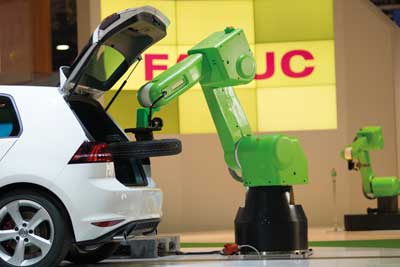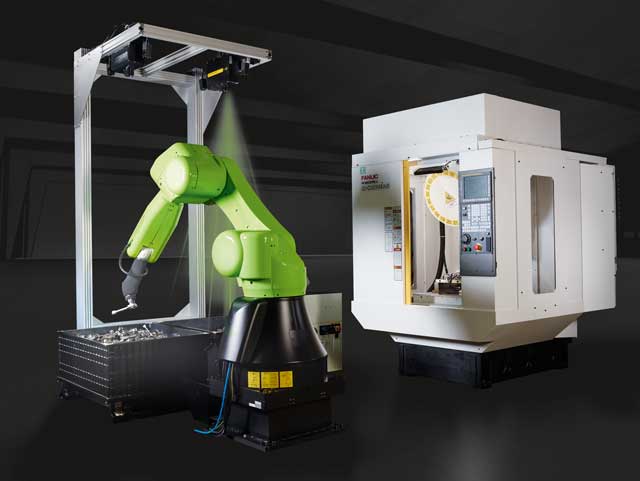As the popularity of collaborative robots increases, so does the need to prepare the workforce for safe and effective working alongside them. Oliver Selby, technical sales engineer at Fanuc UK, shares his advice on best practice.
Over the past two decades, the use of collaborative robots, designed to assist humans with certain tasks, has steadily expanded, from infrequent implementation on only the largest or best-resourced automotive production lines, to their wider introduction over various businesses and applications, and at various levels of scale. Now, with potential applications ranging from metalworking and packaging to distribution and automotive assembly, for roles from simple pick and place tasks to heavy lifting for machine tending, collaborative robots are becoming a popular investment. But for safe and effective working it’s important to follow best practice guidelines.
1. Check the suitability of your process
Before specifying a collaborative robot, you will need to conduct a full process or application risk assessment. This will identify whether existing automated processes are compatible with a collaborative robot. Some applications will not qualify because of their inherent risks. For example, a process that involves moving a hazardous object, such as one that is sharp, heavy or unstable, would not be suitable for collaborative automation because of the dangers it would present to the human worker.
2. Make sure that your robots comply with necessary safety specifications
A CE marking procedure should always be undertaken as standard during any robotic system integration. This identifies whether the system has been adequately checked, risk-assessed and approved, before it is handed over to the customer. If you are unsure, ask your manufacturer or integrator to confirm that this has been completed satisfactorily. Keep in mind that, while all industrial robots should adhere to ISO 10218-1, collaborative robots should also conform to all or parts of ISO/TS 15066, depending on their specification. Remember, it is always worth checking the suitability of a particular collaborative robot with your application. If you are unsure, speak to the manufacturer.
3. Install additional safety systems
During the initial risk assessment, manufacturers or integrators will identify any additional safety systems that you will need. For example, if a process involves moving a workpiece that is liable to cause injury if dropped, backup or redundant systems should be installed to keep parts on the grippers if the air system fails. Other systems includer floor scanners, light guards, and specialised touch-sensitive tooling.
4. Train your team on the risks…

An employee should not work alongside, or use, a collaborative robot until they have received training in safe operation and basic programming. All employees should be aware of any risks and know how to reduce them. This training will usually be provided by the manufacturer or the integrator. Many also provide additional training courses to develop an employee’s knowledge as the business’s uses of an automated system expands.
5. …but also the benefits
Many employees may be reluctant to work alongside a collaborative robot, perceiving them as a threat to either their safety or job security. Directors, managers and team leaders should make sure that everyone appreciates the benefits of installing a collaborative robot. These include: a reduced workload, less risk of injury due to repetitive motion or heavy lifting, increased job satisfaction, better working conditions, and smoother processes. Ultimately, a collaborative robot improves efficiency and productivity by freeing employees to do tasks that add more value. This expands the potential of the business and increases its profit margins, leading to better working conditions, higher salaries, and more incentives for employees.
6. Still unsure? Speak to an expert

Many businesses, particularly smaller firms, are reluctant to adopt automated technologies because they’re concerned that they don’t have the skills or capacity to manage them. In fact, it’s relatively easy to program basic tasks following initial training. By working with an expert, however, you also have additional support, advice and training opportunities available, whenever you need them.
For information on Fanuc’s range of collaborative robots, visit: www.fanuc.eu/uk/en/robots/robot-filter-page/collaborative-robots.



